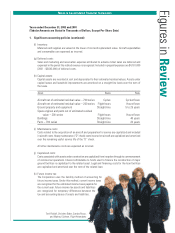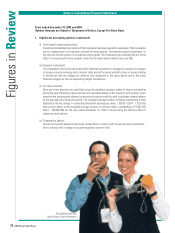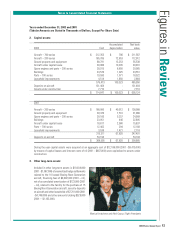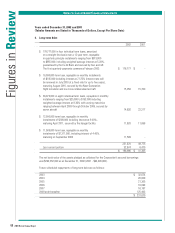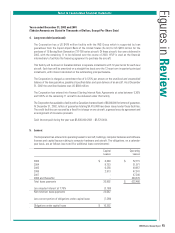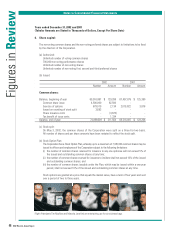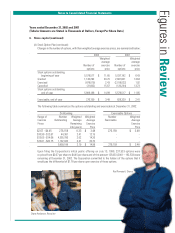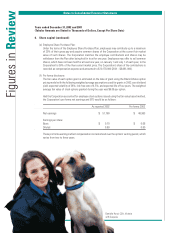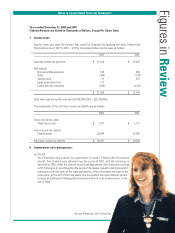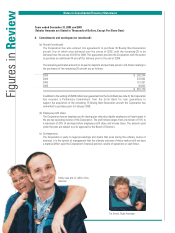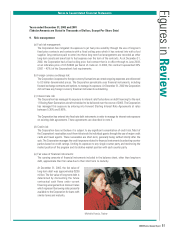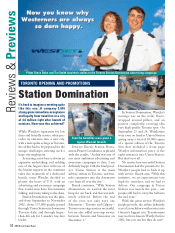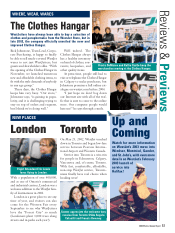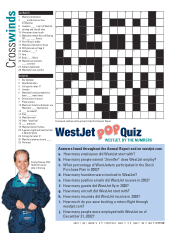Westjet 2002 Annual Report Download - page 51
Download and view the complete annual report
Please find page 51 of the 2002 Westjet annual report below. You can navigate through the pages in the report by either clicking on the pages listed below, or by using the keyword search tool below to find specific information within the annual report.
Figures in Review
Notes to Consolidated Financial Statements
Years ended December 31, 2002 and 2001
(Tabular Amounts are Stated in Thousands of Dollars, Except Per Share Data)
9. Risk management:
(a) Fuel risk management:
The Corporation has mitigated its exposure to jet fuel price volatility through the use of long-term
fixed price contracts and contracts with a fixed ceiling price which it has entered into with a fuel
supplier. Any premiums paid to enter into these long-term fuel arrangements are recorded as other
long-term assets and amortized to fuel expense over the term of the contracts. As at December 31,
2002, the Corporation had a fixed ceiling price fuel contract that is in effect through to June 2003,
at an indicative price of US $18.60 per barrel of crude oil. In 2002, this contract represented 32%
(2001 – 42%) of the Corporation’s fuel requirements.
(b) Foreign currency exchange risk:
The Corporation is exposed to foreign currency fluctuations as certain ongoing expenses are referenced
to US dollar denominated prices. The Corporation periodically uses financial instruments, including
forward exchange contracts and options, to manage its exposure. At December 31, 2002 the Corporation
did not have any foreign currency financial instruments outstanding.
(c) Interest rate risk:
The Corporation has managed its exposure to interest rate fluctuations on debt financing for the next
11 Boeing Next-Generation aircraft scheduled to be delivered over the course of 2003. The Corporation
has managed this exposure by entering into Forward Starting Interest Rate Agreements at rates
between 5.36% and 5.85%.
The Corporation has entered into fixed rate debt instruments in order to manage its interest-rate exposure
on existing debt agreements. These agreements are described in note 4.
(d) Credit risk:
The Corporation does not believe it is subject to any significant concentration of credit risk. Most of
the Corporation’s receivables result from tickets sold to individual guests through the use of major credit
cards and travel agents. These receivables are short-term, generally being settled shortly after the
sale. The Corporation manages the credit exposure related to financial instruments by selecting counter
parties based on credit ratings, limiting its exposure to any single counter party and monitoring the
market position of the program and its relative market position with each counter party.
(e) Fair value of financial instruments:
The carrying amounts of financial instruments included in the balance sheet, other than long-term
debt, approximate their fair value due to their short term to maturity.
At December 31, 2002, the fair value of
long-term debt was approximately $236
million. The fair value of long-term debt is
determined by discounting the future
contractual cash flows under current
financing arrangements at discount rates
which represent borrowing rates presently
available to the Corporation for loans with
similar terms and maturity.
2002 WestJet Annual Report 51
Michelle Francis, Trainer


